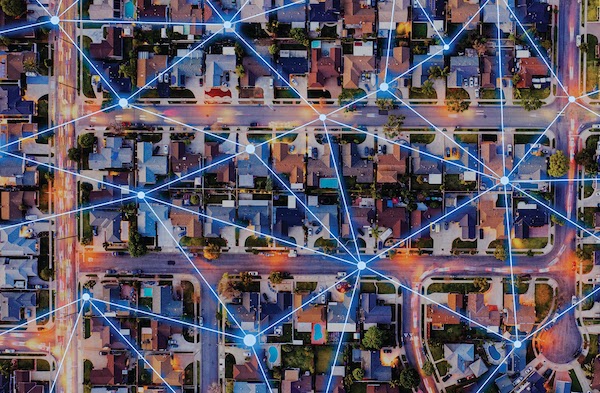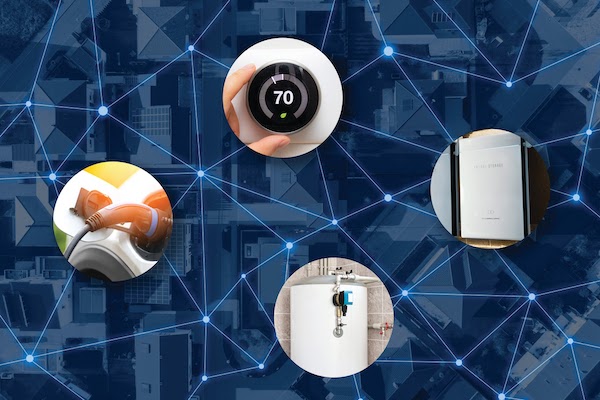Demand Response Program Management: Outsourcing vs. in-house
For decades, demand response (DR) has proven a tried-and-true conservation tactic to mitigate energy usage during peak demand hours. Historically, those peak demand hours were relatively predictable, with increases in demand paralleling commuter and weather patterns. Between the environmental effects of climate change causing increased extreme weather events and global electrification efforts adding further encumbrance to the grid, meeting demand has become more complicated.
Fortunately, that same adoption of distributed energy resources (DERs), including calls for increased national electric vehicle (EV) production, means more opportunities for utilities to benefit from demand response. With increased public access to smart home technologies, device control platforms like distributed energy resource management systems (DERMS) provide utilities with the tools necessary to launch - and later scale - their demand response strategies.
The value of demand response
In 2021, around 10.5 million customers in the U.S. were enrolled in demand response programs, which led to a total of 984.13 GWh in total electricity conserved. This figure indicates customer interest and commitment that led to significant energy conservation savings. Combined with the increased market growth of demand response, as well as the continued adoption of distributed energy resource (DER) technologies from solar to electric vehicles (EVs) and beyond, the potential for demand response keeps growing.

This growth provides more opportunities for utilities to create and launch demand response programs.
So how should you get started?
Developing any demand flexibility program involves challenges ranging from determining the scope and scale of a pilot, to selecting the right OEM device partners for the community. Regulatory and bureaucratic logistics, as well as community and stakeholder buy-in to approve the pilot for deployment, will also be needed. It bears repeating: demand response is a tested and effective means of replacing high-energy costs and enhancing grid resiliency.
Two main models for demand response program management
1. Outsourcing management through a DERMS technology vendor means that utilities select a vendor to hand off program goals, objectives, and parameters. The DERMS vendor then executes a program and reports performance metrics and event data to the utility.
2. An in-house program using a SaaS solution model allows utilities to create, run, and modify their demand response programs internally. This model requires vendor selection of capabilities and integration options, and works with the vendor’s implementation and support teams to launch and execute the program in-house. This model includes learning how to manage and own every aspect of the program itself within a department in the utility, such as energy advisor teams or conservation and energy management.
Outsourcing benefits
First, let’s look at the potential of outsourcing your demand response program. In addition to minimizing the production hours involved in running any program, outsourcing decreases the need for further internal resources, albeit at a cost.

Through outsourcing, vendors:
- Can save time! Vendors can do much of the heavy lifting, from handling enrollment to calling events, processing incentives, and reporting on program performance.
- Only need a surface-level knowledge of the tool, and an overview of internal program goals.
- Don’t need staffing dedicated to the programs, saving both time and education. Default to experts so there is no need to create expertise in-house.
The trade-off, of course, is that the utility is ceding control to a third-party vendor, which includes the end-to-end customer lifecycle journey and all the data that comes with it. Likewise, the costs involved with outsourcing may include unanticipated fees that could cover everything from reliability concerns to an ever-evolving tech landscape.
In-house program benefits
As mentioned above, working with third-party vendors means that the utility loses control of the programs by trusting someone else to accomplish goals. Suppose there is an error from the third-party vendor: who will customers hold accountable? Concurrently, ceding control to third-party vendors limits the intelligence needed to properly scale a demand response program by minimizing data points.
Let’s look at a few more benefits of keeping the demand response program in-house.
- Again, third-party vendors add a layer of 3rd party complexity between the utility and its customers.
- With increased challenges to energy security and the rise in cybersecurity threats, utilities must take care when sharing homeowner information and ensuring robust data security measures.
- Without programmatic control, utility program managers can’t tweak, shape, and own their programs.
- It’s less nimble and requires ultimate trust in the vendor to execute and troubleshoot programs.
- Direct customer interfacing and access to all aspects of program control and execution mean utility program managers may not even know when issues arise until it’s too late. Monitoring programs in real-time allows response at the moment needed most.
- Utility providers lose the opportunity for reporting and program success shaped by the vendor, not by program managers. By giving up the functionality of the program to a 3rd party, the utility is relying on them to share results and handle issues that arise without direct involvement in the process or data.
- Without current and historical data, utilities can’t scale or gather real-time insights into program performance.
Should you outsource your DR program, or run it internally?
There is no wrong answer to this question, only different approaches based on needs. Ultimately, selecting the right SaaS software to run the program allows for the most flexibility, ownership, and organic growth opportunities. While it does take some time and dedicated resources, outsourcing an entire program also requires a dedicated vendor liaison to coordinate program needs and analyze results. The primary difference is that the ability to run a program will provide much more visibility and hands-on opportunities for understanding customer behavior and tailoring the program to fit specific needs.
Syd Bishop is a senior content specialist for Virtual Peaker, a cloud-based distributed energy company that empowers modern utilities to build the grid of the future and meet global decarbonization goals.
Virtual Peaker | virtual-peaker.com
Author: Syd Bishop
Volume: 2023 November/December








